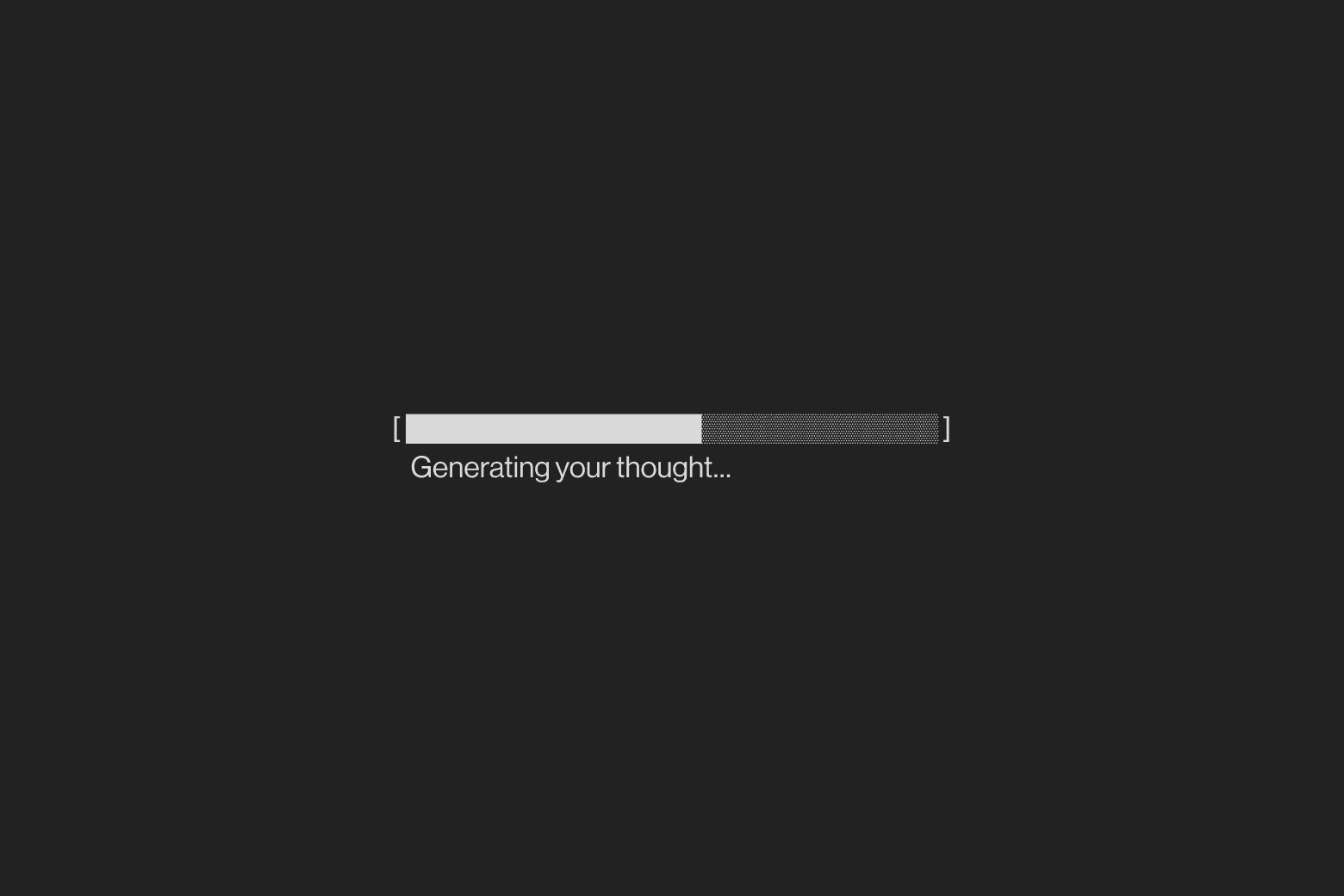Article
18/10/2025

Matthias Beckman
Creative Director
Noise. That word has been around for many years. For a long time, people have tried to stand out from the noise—not drown in it. But very few succeed. And with every attempt, the noise grows louder, ironically. Today, the noise is digital, just like the rest of society. And it has been rebranded under a new name – you probably know it as Content.
Every second, 500 minutes of video are uploaded to the internet. In one day, that’s 43 million minutes – or 82 years of continuous watching.
Ten years ago, 400 exabytes equaled the world’s total internet traffic for an entire year. Today, we create that amount every single day.
Content has also become a weapon. Fabricated facts are used to manipulate, data to pull us in every direction, and news to keep us scrolling. When everything can be measured and packaged, it becomes hard to tell what’s actually real.
It’s no wonder that many people feel numb and hopeless. But it’s not our fault – it’s natural. Hopelessness is a product of our time, and when it comes to the troll factories’ share of the content economy, it’s even intentional.
In the latest decade we have been rewired to think in one-second hooks, 15-second documentaries, viral minutes, and to sum it all up in monthly and quarterly reports.
Creative, right.
When exactly was the word “art” replaced with the word “content”?
We used to move people.
Not algos.
To me, content is the C-word.
A dirty word. It’s not king, queen, or key.
It’s a colonizer.
Content lays siege to your inner lands.
So you can work the plow.
Farming content.
It sounds like something from history, doesn’t it? As if industrialization never ended – it just changed factory. Clock in. Clock out.
Netflix’s biggest competitors aren’t Hulu, Disney, or Max (HBO).
It’s your sleep.
Your silence.
Your daydreams.
Your reverie.
Striegler and Hjort write in Navigating Societal Change through Design about something they call an imagination crisis – a kind of collective exhaustion of our ability to imagine something different.
The future no longer feels like something we shape, but something that just happens. An extension of the present, not a break from it.
But the platforms must be fed. No wonder we don’t have time to imagine something new and better. We plan, predict, calculate and optimize – but we no longer dream. And when we stop dreaming, we stop improving the future.
What comes after hopelessness
A bit of background. For a long time, we’ve had two main languages for understanding the world.
Science seeks what is true – what can be proven, repeated, measured.
The humanities seek what is meaningful – what can be interpreted, understood, told.
Together they have shaped our civilization. But when truth is manipulated and meaning fragmented, we are left without a language for direction.
That’s where Design with a capital D comes in. Not as decoration, styling or marketing – but as a discipline seeking to answer a third question:
What is desirable?
Design isn’t about creating a thing, but about enabling something. It’s about shaping the future. About giving form to what doesn’t yet exist – so clearly, concretely and understandably that others can want it into existence.
Design belongs between the two major languages because it draws tools from the fields that exist between them – from the social sciences’ way of seeing patterns, from psychology’s understanding of people, from culture’s reading of its own time, and from art’s ability to make our hair stand on end.
At the intersection of these fields it becomes possible not only to imagine another future – but to design the conditions for it to emerge.
AI can already answer faster what is true. But only we can answer what is worth creating.
So go to a design museum, look at the artefacts and ask yourself: What did this garment, poster or product make possible? Don’t just admire how it looks. Admire what it created.
Think of Mary Quant, who cut skirts short and cut off an era at the same time. Or Katja of Sweden, who did the same – letting clothes follow the body, not the other way around. They didn’t just design clothes – they created freedom of movement.
Look at Shepard Fairey’s HOPE poster for Barack Obama. It wasn’t just an image – it became a movement that brought street aesthetics into the centre of politics. And the other way around, politics became something for everyone, on the street.
Or Dieter Rams, who democratized technology by making it understandable and accessible. Before him, much consumer technology was still machines – something you had to know, or read a manual for.
Think of Design as not what someone makes, but what they make possible.
I believe that Design really is the best way for us as humans to practice believing in the future. It’s an exercise in turning a single idea into a system, giving an image of the future structure, and making innovation part of everyday life.
But if something that didn’t exist yesterday, is to become real tomorrow, someone first has to create the conditions for it to happen.
So refuse to feel hopeless.
Reclaim your imagination.
Start dreaming.






